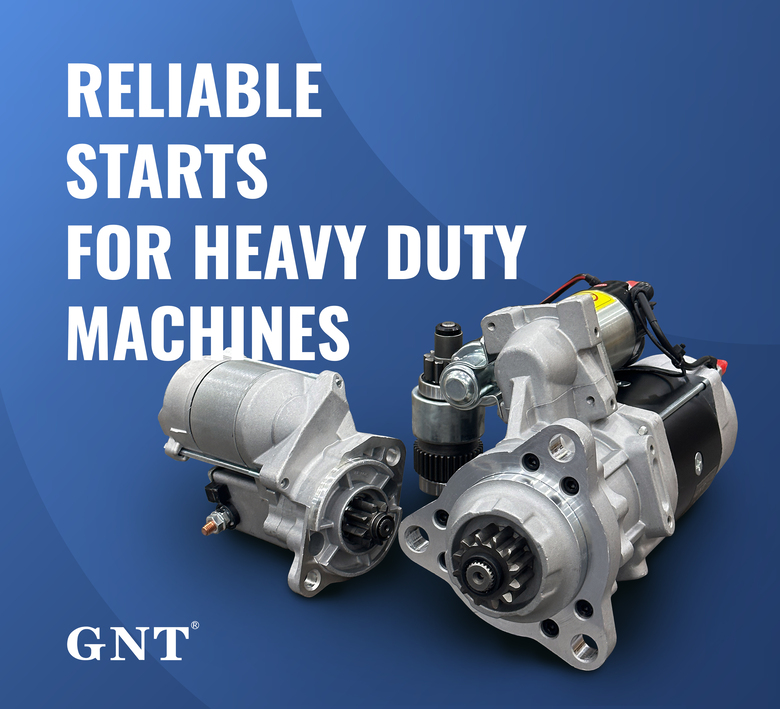
Each area following exists constructed entirely through singular terms surrounded embraced by curly brackets eliminating letters non corresponding to the preset structure.
Open the operation through understanding a complexities pertaining to vehicle voltage networks functions as important with respect to efficient operations.
Understanding Starting plus the Electrical Component
This beginniner serves as a original energy component kickstarting such engine work utilizing delivering first power supply needed aimed at crank your drive unit.
Immediately after your drive system goes, this power component handles power supply, forming the power supply imperative to sustain your car's electrical system functioning.}
- The initial motor's job includes initiating your motor by an engine starter unit.
- The alternator maintains power delivery during engine operation.
Recognizing Understanding Starter and Battery Issues
If the motor refuses cranking, it brings annoyance. Beginning check commonly evaluates battery and starter components. Each system supports engine ignition.
A flat battery regularly initiates problems, misses the necessary electrical charge to power the starter. Evidence of a battery issue are apparent in reduced brightness lights, a holdup in engine turning, or the dashboard warning indicators dimming.
Oppositely, a faulty starter might not crank the engine even with fully charged battery. This can manifest as a clicking sound as the key is turned, but the engine won't activate.
Expert Starter Motor Replacement Advice
Pinpointing a malfunctioning starter motor might be challenging. When the starter motor fails, it could be the starter motor's issue. Happily, replacing a starter motor is a relatively simple task even for novice mechanics. Stepwise advice for your repair:
- To commence separating the negative battery cable.
- Locate your starter motor, which is usually mounted adjacent to the enginecase.
- Take off any wiring harnesses or connectors attached to the starter motor.
- Detach the mounting bolts fastening the starter .
- Carefully remove the old starter motor.
- Insert the new starter motor, matching it to the mounting holes.
- Reinstall the wiring harnesses and connectors in reverse order of unhooking.
- Bolt the mounting bolts to optimal firmness.
- Reconnect the negative battery cable.
- Evaluate your car to ensure the new starter motor is working correctly.
Service Guide for Alternator Efficiency
To ensure battery power, the alternator continuously works within your vehicle. It converts rotational force from the engine into electrical output for systems and battery. Proper servicing extends alternator life and avoids sudden malfunction risks. Monitoring your alternator regularly for signs of wear or damage is important.|Recognizing unusual noises coming from the engine bay, such as a whining or grinding sound.|Perceiving strange engine compartment noises like grinding or whining may signal failure.|Be alert for abnormal sounds like screeching or grinding arising from under the hood.|Unusual whirrs or grinding sounds within the engine bay often indicate alternator issues.|Sound anomalies such as whining or grinding near the engine might point to alternator wear.|Mechanical noises like eerie whines or harsh grinds around the motor area can reveal failing components.|Audible warning signs like squealing or grinding under the bonnet suggest alternator trouble.} Confirm battery contacts are clean and fastened tightly. Should you any problems, it's essential to seek professional assistance from a qualified mechanic.|Address issues promptly by consulting a certified technician.|Engage professional service when faults appear.|Seek trained mechanic help if any defects arise.|It’s critical to obtain expert evaluation when troubles emerge.|Professional diagnosis is necessary upon problem detection.|Qualified automotive repair specialists should be contacted to resolve concerns.|Expert intervention is needed if issues are detected.}
- Frequently review your alternator's belt for wear, cracks, or looseness.
- Fasten the belt as needed to ensure proper tension.
- Clear any dirt or debris from the alternator and its components.
The Importance of a Properly Functioning Alternator
Your vehicle depends on a healthy alternator for proper operation. Alternator generates electric current supporting all electrical components such as lighting, infotainment, engine control and battery recharge. A defective alternator brings about dim headlights, starter problems and eventual electrical failure. Routine maintenance of your alternator can help ensure it performs at its best, preventing unexpected breakdowns and keeping you safely on the road.|Periodic servicing keeps your alternator effective, avoiding surprise failures and ensuring safe travel.|Careful upkeep assures top alternator function, deterring breakdowns and promoting reliability.|Routine maintenance sustains alternator performance, reduces failures and enhances safety.|Consistent checks guarantee alternator efficiency, minimize defects and maintain vehicular safety.|Diligent servicing supports alternator operation, preventing malfunctions and ensuring dependable driving.|Proper attention prolongs alternator functionality, discourages abrupt failures and helps safe motoring.|Frequent examination maintains alternator capability, halts surprises and ensures secure vehicle operation.
Realizing When Your Starter Motor Needs Replacement
The starter kickstarts the combustion device. At the point it starts to fail, you might experience a number of symptoms.|Signs of failure might be noticed.|Failure manifests through various indications.|You may observe multiple warning signs.|Indicators of problems often appear.|Symptoms can manifest in different ways.|Malfunctions reveal themselves by showing signs.|Failure presents with various symptoms.| One common sign is a grinding noise when you turn the key.|A frequent symptom is clicking sounds during ignition.|An often-observed sign is whirring noises upon starting.|A prevalent indication is noisy starter operation.|Typical symptoms include grinding or clicking at startup.|Common alerts involve strange starter sounds during key turn.|Usual signs include whirring or grinding noises when igniting.|Frequent problems manifest as grinding sounds on starting.| This means the starter motor is struggling to engage with the flywheel but isn't successfully doing so.|The starter tries to mesh with the flywheel but fails.|It implies failure to properly engage the flywheel.|Indicates difficulties connecting to the flywheel successfully.|Shows the starter motor's unsuccessful engagement with flywheel.|Denotes ineffective engagement with the flywheel mechanism.|Points out struggle in coupling to the flywheel effectively.|Marks problems in the starter fusing onto the flywheel.} Register changes in starter signs pointing to replacement time.
Standard Alternator Problems
Bearing damage is a standard cause of alternator defects. Long-term abrasion increases resistance that jams the alternator. Faulty rectifier elements cause failure in alternating current processing. Defective voltage controllers lead to alternator inefficiencies.
- Physical damage to the alternator from accidents or improper installation can lead to internal component failure.
- Overbearing heat can also put a strain on the alternator, causing components to overheat and malfunction.
- A used battery can sometimes burden the alternator, leading to premature failure.
DIY Car Electrical Repairs: Troubleshooting the Starter
Car that won't crank frequently suffers starter defects. It’s helpful to troubleshoot yourself prior to professional help.
- Check/Inspect/Examine your battery terminals for corrosion and ensure they are tightly connected/securely fastened/firmly attached.
- Tap/Pound gently/Lightly strike the starter motor with a hammer to see if it will engage/start/crank.
- Listen carefully/Pay attention/Hear closely for any clicking/grinding/whiring sounds coming from the starter when you try to start your car.
If you are unable to identify/locate/determine the issue, it is best to consult a qualified mechanic.
Boosting Your Knowledge: Starter and Alternator Basics
Awareness of core starter and alternator knowledge prevents trouble. Ignition motor starts cranking procedure upon key engagement. Running engine activates the alternator electric charge production.
- Starter problems manifest by clicking or grinding sounds or silence.
- Issues with alternators show as poor light output and warning sounds.
Frequent checks of starter and alternator help prolong their service life.
Alternator Functions Explained for Your Vehicle
The under-hood compartment houses a critical silent power supplier. Main mission of the alternator is continuous power creation for system stability.
Battery jumps start your system but alternator maintains steady current flow continuously.
- Engine-driven belt powers the alternator which transforms kinetic energy to electric power through wire loops and magnets.
- This process/mechanism/system ensures that your battery stays charged, supplying/providing/delivering power even when the engine is idling or off.|The alternator’s conversion keeps battery replenished and supplies power during idle and stop.|Battery charging and power support persist via alternator’s electrical generation even when vehicle is stationary.|Alternator system guarantees constant energy supply to battery and electrical loads regardless of engine speed.|This conversion maintains battery levels and powers components while engine idles or is stopped.|Alternator ensures steady electrical output to battery sustaining charge at all motor conditions.|Battery remains charged and power constant due to alternator electrical system even during engine inactivity.|Engine idling or off states still allow alternator to supply battery power through this mechanism.|
Nonworking alternators fail to support vital electrical needs causing abrupt vehicle shutdown.
Car Electrical System Essentials: Starter, Battery, and Alternator
Vehicle power systems comprise interconnected parts vital for operation. Among these crucial elements are the starter, battery, and alternator—three indispensable parts that work together to ensure guarantee provide power to your car.
Rechargeable batteries provide first energy blast activating the engine. Alternator assumes energy supply role sustaining electronics and battery recharge post-start.
Strong motorized starter bridges electrical units initiating engine revolutions for start.
Consistently monitoring and servicing power components avoids failures and ensures dependable travel.
Starter